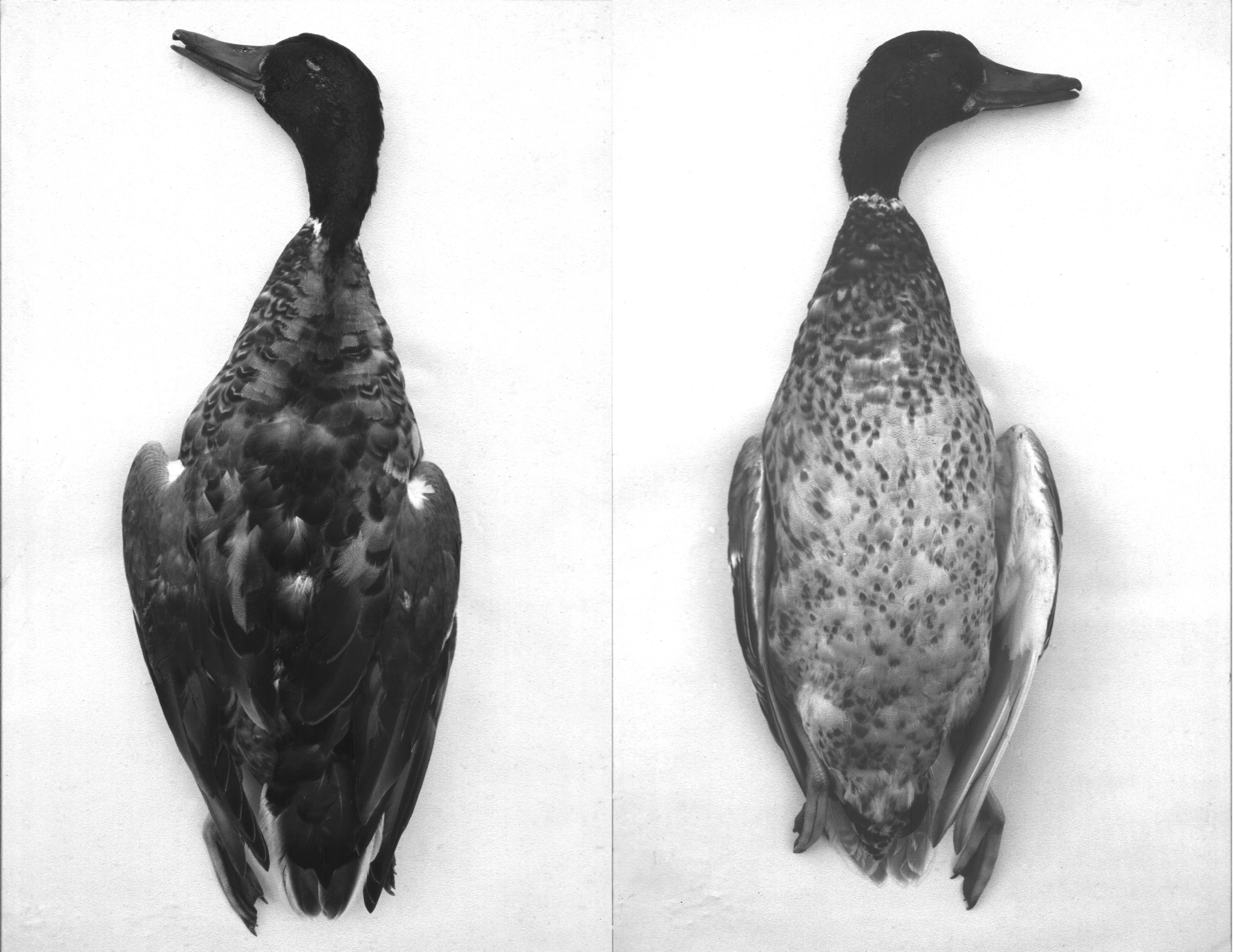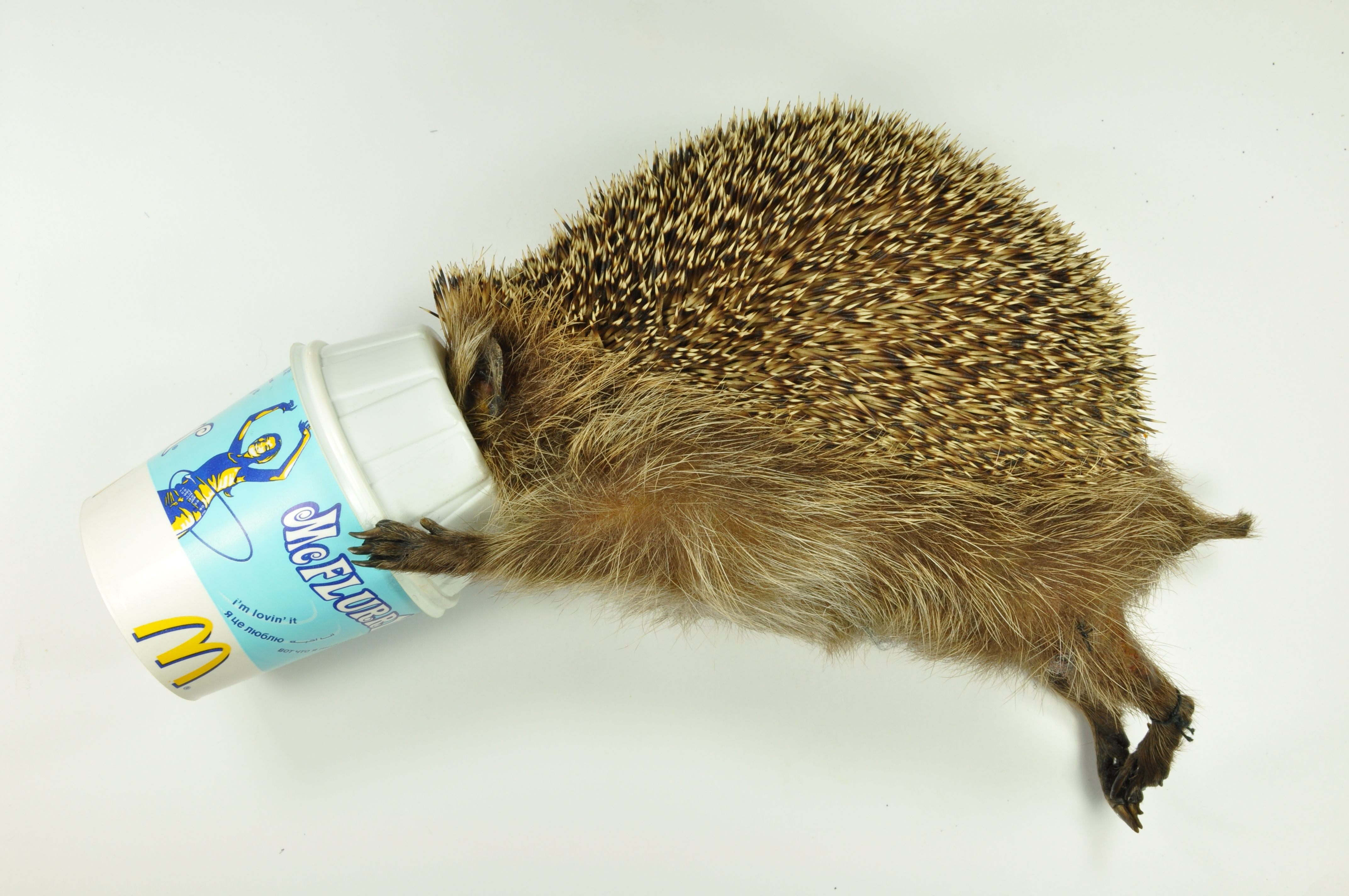A Dutch Exhibit Highlights Startling and Unusual Animal Deaths
Preserved specimens include the McFlurry Hedgehog and the CERN Weasel.

The Dode Dieren Met Een Verhaal or Dead Animal Tales exhibit started with a literal collision. In 1995, Kees Moeliker, the curator of Natural History Museum Rotterdam in the Netherlands, was sitting at his desk when he heard a noise. A duck had crashed into the museum’s glass facade. It wasn’t the first time he’d witnessed an animal’s untimely demise against the building, but this time, the duck’s lifeless body was then assaulted by another male duck.
It was the first time an act of homosexual necrophilia was witnessed in the species and Moeliker published a paper about the incident, which won an Ig Nobel prize in 2003*. The story spread, and occasionally visitors to the museum would ask to see the duck, which had been immortalized with the help of taxidermy. Though Moeliker would bring the duck out upon request, it was another incident, infamous in the Netherlands, that really launched the exhibit.
An annual event known as Domino Day, which started in 1998, televised the attempts of a Dutch team to break the world record for the number of dominos set up and toppled. The event garnered a lot of local attention each year and even boasted hosts like Lionel Richie and Shania Twain. At the 2005 event, a sparrow (a mus in Dutch) got into the exhibition hall and, after it knocked over 23,000 dominos, an expert was brought in to deal with the bird. Attempts to capture it failed and it was eventually shot. The incident caused a tremendous outcry in the Netherlands, and the shooter was fined €200. After Moeliker appealed to the Ministry of Justice and Security, the body of the so-called dominomus joined the duck at the museum.

The bird generated a lot of interest and was featured in an exhibit about sparrows at the museum. “We have half a million dead animals and plants at the museum,” says Moeliker “and most get a half of a second of attention from the visitors.” The ill-fated duck and dominomus, however, got a lot more. So, Moeliker had his insight for the Dead Animal Tales exhibit, which opened in 2013.
“What the exhibit is really about is the collision, sometimes literally, between humans and animals,” says Moeliker. It is the first thing you encounter when you enter the museum. The exhibit now includes around 25 animals, though only around 10 are on display at any time. Criteria for inclusion are loose and based around the fatal animal incidents that Moeliker and his successor, Bram Langeveld, think have garnered enough public interest. Inclusion in the exhibition also requires that the museum have a body in good enough condition to display.
“Sometimes, people turn up with a dead animal in a plastic bag,” says Langeveld. Other times, Moeliker and Langeveld had to do a bit more work to acquire new pieces. To obtain a weasel that had been electrocuted by a transformer at the Large Hadron Collider in November 2016, the pair had to drive to CERN and pick up the body, which had been held by a Dutch researcher working for the institute.

Other donations have arrived under a shroud of secrecy, such as the Parliament Mouse. In 2012, the Dutch Parliament building was plagued with a rodent problem. The museum requested one of the mice but was told “the House of Representatives does not make vermin, dead animals and other waste available to third parties, not even to collections.” However, someone in the parliament disagreed and anonymously mailed the body of one rodent to the museum. It is now on display, complete with the envelope in which it arrived.

Most of the animals come from the Netherlands, but two objects have arrived from abroad: the CERN Weasel and the Breakfast Bat from Germany, which came tumbling out of a box of cereal in Stuttgart in 2012. (A German government investigation determined that the bat entered the cereal box when it was on a shelf in the purchasing family’s home.) “We’d love to have more animals from abroad, but the transportation of animal remains can be difficult,” says Moeliker.
Although the sensational stories behind the animals may be what drives the interest in the exhibit, they bring up larger moral questions about the impact of human lifestyles on animals. When Langeveld gives tours of the museum to high school students, he shows the McFlurry Hedgehog as a sad example of why we should properly dispose of our trash. The hedgehog was found dead with its head stuck in the top of a McDonald’s McFlurry container. These containers would get stuck around the animals’ necks and, unable to remove them, they would starve to death.

This year, the museum acquired the remains of two new animals for the exhibit. The first were the legs of a dead heron that was found by police after the bird was roasted and eaten by a homeless man. Moeliker called the police after hearing the story, and they fished the legs out of the trash and donated them.

The other new addition was a kingfisher that died perfectly preserved in ice during a recent cold spell, and whose photo went viral. The museum is trying to display the bird still in the block of ice, as it arrived.
*Correction: We originally said Kees Moeliker won the Ig Nobel prize in 2013. He won in 2003.
































Follow us on Twitter to get the latest on the world's hidden wonders.
Like us on Facebook to get the latest on the world's hidden wonders.
Follow us on Twitter Like us on Facebook